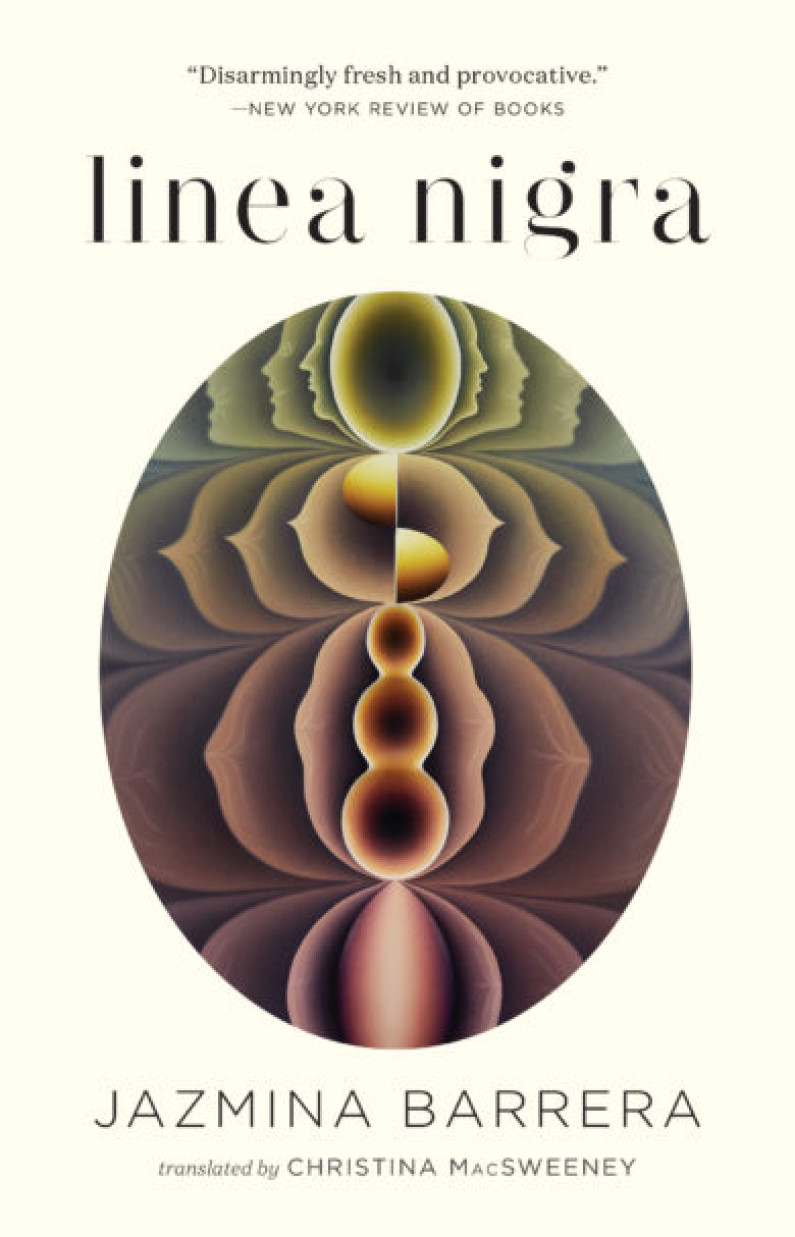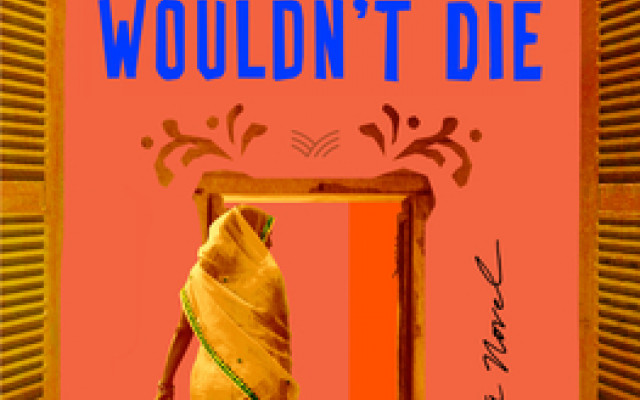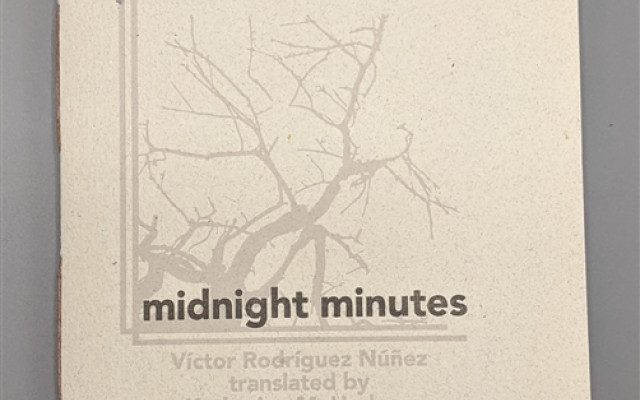Review: Linea nigra: An Essay on Pregnancy & Earthquakes

Linea nigra: An essay on pregnancy & earthquakes
By Jazmina Barrera, translated from the Spanish by Christina MacSweeney
Two Lines Press, 184 pp., $21.95 (Hardcover)
Review by Hannah D. Markley
The first time I felt an earthquake, my friends and I—all of us middle and high schoolers—were sitting on the second floor of a decades-old cinderblock cabin. One small tremor, maybe two, and the whole thing was over before we quite realized what had happened. Even though we were at summer camp, the southern Illinois heat and humidity pushed us inside most afternoons. We didn’t mind because we played Spoons on the cabin floor, turned the music up and sashayed, stomped, and shook the floor beneath us. Even so young, we talked about the future, how many of us hoped we would get married and become mothers. Now, more than two decades later, I see those girls we were, and our newly born longing, but also how little we understood about what we were asking for.
In Linea nigra: An essay on pregnancy & earthquakes, translated from the Spanish by Christina MacSweeney, Jazmina Barrera presents a refreshingly layered experience of motherhood. The essay, a segmented hybrid in four parts, takes place in the sprawl of Mexico City and begins when Barrera confirms her pregnancy at the doctor’s office. Like many, she downloads an app that tells her how her body is changing each week. Barrera writes, “Pregnancy is a fruit bowl. The apps tell you which fruit your fetus resembles each week as it grows. But none of the apps are written in Mexico, so they don’t take into account the wide variety of fruit we have here, the many different sizes of mangos and avocados.” The app assumes a certain kind of context for fruit, and Barrera goes on to point out that even a mango carries more variation than one may realize. The fruit comparison sets up a pattern of discovery early in the essay in which Barrera shows how words and experiences across cultures and even within the same language can carry different weights and values. Comparing her partner’s Chilean Spanish and her Mexican Spanish Barrera writes, “Alejandro says that Mexican mandarins are the same size as Chilean oranges and Chilean mandarins are the size of Mexican limes. Plus what I simply call limón, he calls a limón de pica, and what he calls a limón, is for me a yellow lime.” From words for fruit, she flows into baby names, and as they make lists of potential names and cross the names of exes off the list, Barrera wonders if she could name a baby for someone she knows: can a name be separate from a person, their personality and their values? When they find out it’s a boy, she and her partner choose the name Silvestre, meaning wild in Spanish. This would have been her name, if she had been a boy, and Barrera imagines if she had been a Silvestre, she would have been “braver, less controlling, and more cheerful than Jazmina.” Barrera believes that every child should take their mother’s surname, but then she decides against giving hers to the baby because Barrera means “barrier.” With the names and the fruit, she seems to be asking: what does it mean to be a mother and who will my son be?
Attention to Spanish terms for pregnancy and birth introduce the metaphorical and semantic link between childbirth and the earthquakes that accompany her pregnancy. She notes that these experiences not only generate the creation of life but also its division: “Parto—from the verb partir, to depart—is the Spanish term for childbirth. It had never crossed my mind to imagine childbirth as the moment when someone leaves you: the moment of departure and the moment of partition. The moment of splitting into two.” What Barrera glimpses in this moment is how language teaches us and guides us toward new awareness, and how truth can hide in the most obvious places—realizations that reorder her assumptions of childbirth and motherhood. MacSweeney’s preservation of Spanish words for birth and even for fruit in the early moments of the book highlight the intimate juxtaposition Barrera creates between the ground shifting inside her and in the exterior world. MacSweeney invites the reader into Barrera’s moment of disorientation and discovery. Like language, birth and pregnancy are profoundly personal, and interspersing Spanish in this section captures the particulars of Barrera’s comingled grief and joy.
Despite the relatively linear chronology of the book, which begins with early pregnancy and ends in the early months of the baby’s life, multiple earthquakes interrupt the pregnancy and shape Barrera’s sense of time. Barrera is writing for an audience that is familiar with earthquakes, with the terror of alarms in the middle of the night. These internal realignments coincide with the earthquakes that shake the city, so this body of knowledge, especially for those close to it, holds a mirror to the Barrera’s internal world and its newly razed norms. As Barrera writes, “motherhood is an earthquake.” Barrera’s ever-changing body also throws her writing routines and priorities into disarray. All she can think about is her pregnancy and this book project, which change her relationships with her partner, family, and friends. In one middle-of-the-night earthquake, she and Alejandro get out of bed to move to a safe location. When he moves too slow for comfort, she grabs the keys and runs out into the street. Afterwards, she thinks how she might have waited for him instead of bolting out and saving herself, but she observes that, since she’s been pregnant, “being selfish feels the same as being unselfish” and “[l]ooking out for myself is looking out for someone else.” Pregnancy shifts her internal priorities completely.
One major earthquake causes damage to paintings done by Barrera’s mother, a professional artist, and Barrera discusses its damage to her mother’s work alongside the disruptions her new-born son causes to her writing. This juxtaposition asks the reader to ponder how the form of the work can reflect the process of its creation. Barrera writes, “In my mother’s opinion, some paintings were improved by the intervention of an earthquake. Paintings she hadn’t liked, but with the addition of cracks and other surface mishaps, she now does, or at least more than before.” In the end, her mother hopes to exhibit the paintings in their fractured state on the anniversary of the earthquake, and Barrera also thinks that perhaps it’s best to leave the essay as it is, to let the interruptions remain. The structure of the book reflects her life as a mother and refuses to conform to expectations of order and narrative.
Barrera isn’t the first to let the structures (or lack thereof) in motherhood enter her work. She is curious about other mothers, particularly mothers who are artists, and throughout her essay she often turns her critical eye to mothers in literature. One book she mentions is Maggie Nelson’s Argonauts, a prominent work of feminist autotheory that combines observations on the body with theory. By considering earthquakes, semantics, critical analysis, and memoir Barrera shows an awareness of the larger cultural conversations around motherhood and by including them, she works to disrupt the stereotypes of mothers and mothers as artists. Autotheory aims to make the marginalized body and its experiences visible, yet Barrera still wonders if this is possible. Pregnancy, she writes, may be untranslatable to those who haven’t themselves experienced it: “It’s only now that I can imagine what life was like for my mother when she was pregnant; a secret world that only she knew. How difficult it must be for a man, who will never experience pregnancy, to imagine that state. How difficult it will be for the man in the process of construction inside me to ever understand it.” Leaning into its untranslatability for others reiterates the tension Barrera navigates throughout the essay, how what happens to her, even in her own body, can seem unstable and unknowable. Each fragment of Linea nigra thus becomes an attempt at some assembly or acceptance of the fissures and cracks of pregnancy and motherhood, an exercise in articulating its complexities.
—
Hannah D. Markley is a writer, educator, and editor. She contributes as an assistant nonfiction editor to Terrain.org, and her writing appears in Fourth Genre, Bitter Southerner, and Appalachian Review.




